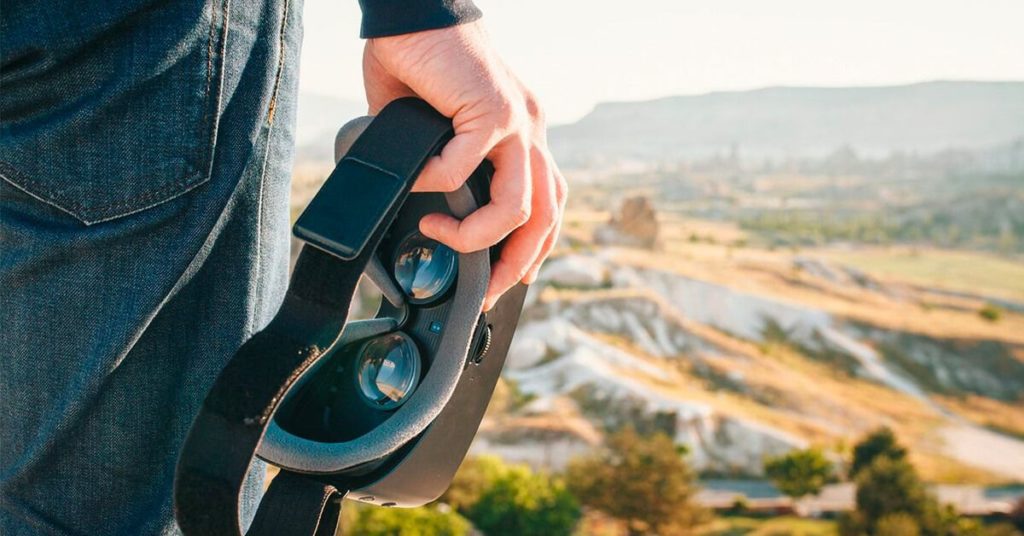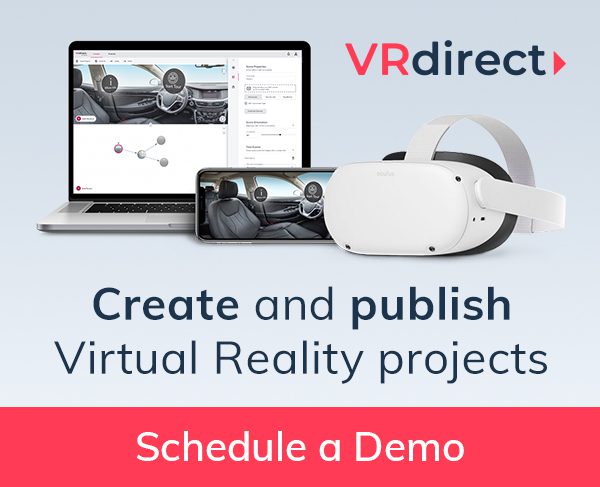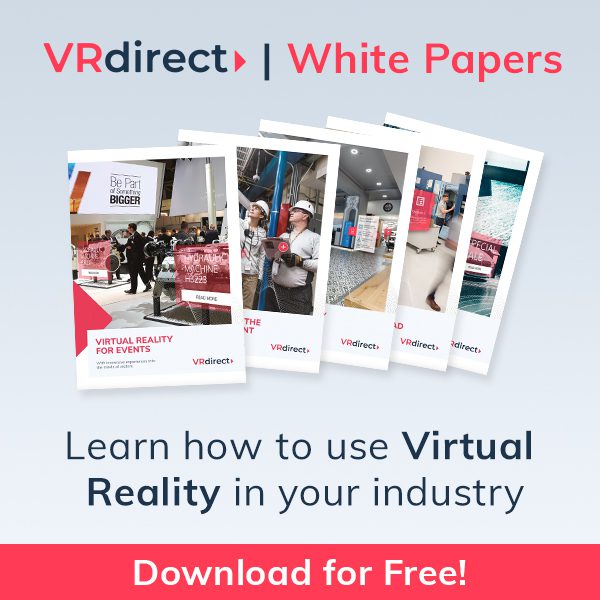The Difference:
The Definition:
Interactive 360° videos are live-action videos captured using special 360-degree or omnidirectional cameras. As with usual videos, these too can be viewed with any 360-compatible devices such as smartphones or computers. They allow users to interact with the video in a 360-panoramic view of the space, but influencing the story or creating the intended narrative is out of the question. Even though users can look or walk around using direction keys or a mouse, the experience is confined to a limited space captured from the camera’s point of view.
Virtual Reality is a more interactive and immersive experience that pulls a user into a spatial, 3D-dimension replicating life-like scenarios. There’s greater freedom to move or interact without the limitation of a particular narrative. The possibility to make a conscious choice, influence the narrative, and interact almost realistically with real-life scenarios makes VR the key to unlocking the future. For accessibility, users need to wear VR headsets and handheld VR devices. Read our article: 20 free resources to help you create an interactive VR experience

Presuming that you now have a grip on what these technologies are capable of, further dissection will help better understand the difference between the two. Let’s begin by looking at the starkest difference of them all:
- Immersiveness: Immersion is the experience defined as the deep mental involvement in something. 360° Interactive videos are online audio-visual experiences that allow users to click anywhere on the video and trigger an action. But they do not match the immersive quotient that makes VR so special. Virtual Reality is much more immersive. It grips the user’s attention and immerses their mind in an alternate spatial reality, disconnecting them from the physical world, almost completely.
- Interactiveness: While Interactive 360° videos are somewhat interactive, allowing users to engage in a click-and-response, or move around the 360 videos using a keypad, their interaction is limited to a few choices and is linear. In comparison, VR allows much more engaging interaction with the objects in a virtual space that feels and looks almost real. For instance, the medical sector is using VR to train their future surgeons with VR surgeries. It speaks volumes about the effectiveness of using VR to develop muscle memory for more critical jobs.
- Influencing the Narrative: Since interactive 360° videos are pre-recorded footage of places or events, users are limited to recorded linear timelines. Users cannot change these events in the timeline. In other words, they do more than what is intended for them to do. With VR, things get a lot more flexible and open to change. The engulfing 3D environment is more responsive to user action and can alter a narrative’s fate. Different decisions lead to different outcomes, depending on the choice made. Not that they would suffice to define VR yet, but games such as Second Life and Fortnight can be used as an analogy to understand this point. Second Life users, also called residents, can create virtual representations of themselves, called avatars, and interact with places and objects as they explore a virtual world.
- Movement: Where interactive 360 videos are limited to the perspective of the lens used for recording, the experience runs along on a timeline of the recorded video, but in VR, you have no pivot. VR is a versatile experience that allows the users to move freely within the vast space. In doing so, they change the sequence or the course of the events and can move in all directions, not limited to a timeline, to explore the virtual space as long as they wish to.
- The Tech: While Interactive 360° videos need an omnidirectional camera and video editing software, VR requires a state-of-art 3D rendering design engine. Currently, Unity 3D is ‘the tool’ for VR development.
- Accessibility: Interactive 360° videos can be accessed on any 360 compatible platforms such as youtube, using smartphones, tablets, or laptops, whereas a full-immersive VR experience requires a VR headset and controllers to access and navigate within the VR environment.
- Current Use Cases: Both technologies offer a gamut of use cases. Tourism companies, popular media companies, and even artists are capitalizing on Interactive 360° videos for more exciting and engaging user experiences. On the other hand, institutions, organizations, and manufacturing companies are using VR for various purposes such as learning, hiring, and product prototyping, respectively.
Interactive 360° VR videos: The best of both worlds
At the cusp of Virtual Reality & interactive 360° videos, a hybrid 360° interactive virtual reality video comes to life. It borrows VR’s immersiveness and the ease of creating 360 interactive videos for creating a more engaging, memorable, and interactive experience. This tech is drawing more attention as VR devices become cheaper. 360° interactive virtual reality videos are also a much more economical and faster way to create projects compared to a fully-immersive VR experience. Read the guide “How to film your own 360° footage.”

VR or interactive 360° videos, which one should I go with?
It depends on a few factors. VR can be of great use if you have the budget. That said, if you are a small or medium-sized business, creating a fully immersive VR experience can be costly. Other factors include the nature of your business. For example, media houses or travel companies can use 360 interactive videos to market an experience in place of a video commercial and reach out to a wider audience on youtube or social media. But for more complex or physical products, VR comes as a boon. The tech allows creating a virtual avatar of your product or services previously impossible to sample. For instance, you are a car manufacturer. You can now use VR to allow users to sit inside the car, check the interiors, experience the ride, etc., and influence their buying decision in your favor.
But let’s not forget that we have interactive 360° VR tech to tackle the problem of budget and immersiveness.
VRdirect: Creating Interactive 360° VR videos
Read our whitepaper to learn more about different use cases.
You may share the project with a web link with anyone and not worry about any downtime as your project runs on dedicated cloud-based infrastructure and seamlessly adapts to any browser. Moreover, you can even publish your project over multiple devices simultaneously, making it perfect for product launch. The uses of VRdirect are numerous, and the VRdirect can help you understand them better. Get in touch with the team to explore how the state-of-art VRdirect platform can help transform your business.






